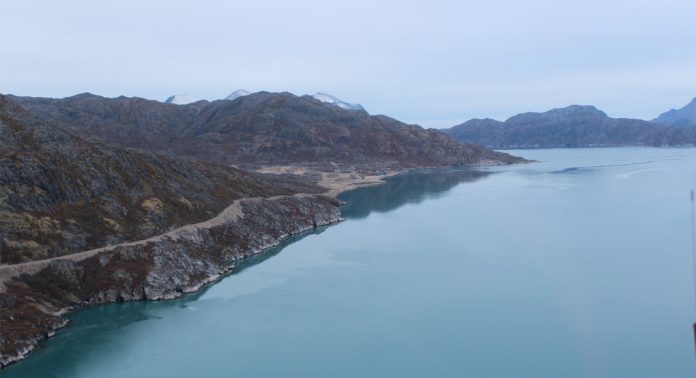Exploration of the Grønnedal-Ika carbonatite complex could advance a new era of sustainable mining and help in meeting global rare earth demand.
Grønnedal-Ika is located approximately 10km from the world’s largest historical source of natural cryolite in Greenland. This carbonatite complex, near the Ivittuut cryolite mine, lies on Greenland’s Southwest coast. The area underwent 120 years of mining between 1865 and 1985, producing 3.8 million tonnes of high-grade cryolite. Cryolite is a mineral used in aluminium production and Ivittuut is the only site on Earth where it has been extracted in commercial quantities.
What has been revealed by the Ivittuut project so far?
Eclipse Metals Ltd (ASX: EPM) is an Australian company that acquired the exploration project in early 2021 after a geological data review which indicated potential for the former mine to host a variety of sought-after commodities, including cryolite, rare earth elements (REEs), and high purity quartz (HPQ).
Eclipse’s Executive Chairman, Carl Popal, said the Ivittuut Project, within mineral exploration licence (MEL) 2007-45, which also encompasses the nearby Grønnedal-Ika carbonatite complex, had “multi-facet commercial potential” for the company.
“Ivittuut is unique in so many ways, not only as the world’s only cryolite mine with huge potential for multicommodity deposits next to a historical port,” explained Popal shortly after the acquisition.
The Grønnedal-Ika carbonatite complex: A prime REE target
Eclipse’s latest evaluation of geophysical data is building a case for further exploration at Grønnedal-Ika, which is emerging as a significant REE target.
The Grønnedal-Ika complex is one of the larger intrusions of the Gardar Province, a suite of alkaline igneous rocks emplaced into a continental rift system in South Greenland in the Mesoproterozoic period. This igneous complex measures approximately 8km by 3km in exposed dimension and consists primarily of layered nepheline syenites intruded by a porphyritic syenite and a plug of carbonatite. The carbonatite contains varying amounts of calcite, siderite, and magnetite.
The siderite content increases towards the centre of the carbonatite plug, and large amounts of magnetite occur where mafic dykes cut the siderite-rich part of the carbonatite. Magnetite is exclusively secondary, emerging from the original siderite due to decarbonation and oxidation (contact metamorphism) in the vicinity of the mafic dykes. This is in accordance with research on the Grønnedal-Ika carbonatite-syenite complex conducted by Halama et al.(2005), which was published in the Journal of Petrology. Findings from this study led the Geological Survey of Denmark and Greenland (GEUS) to recognise the Grønnedal-Ika complex as one of Greenland’s prime targets in meeting global rare earth demand.
Additionally, three-dimensional (3D) inversion modelling of airborne magnetic data has identified several high amplitudes and vertically extensive magnetic bodies at Grønnedal-Ika. Eclipse modelled magnetic bodies – up to 2,700m long and 1,000m wide, extending to >900m below the surface – that are spatially coincident with a cluster of electromagnetic (EM) bedrock conductors identified by a previous explorer.
Eclipse’s reconnaissance exploration last year revealed a strong correlation between REE mineralisation and zones of strong positive magnetic anomalism at Grønnedal-Ika. Thus, the Grønnedal-Ika prospects are associated with magnetite-bearing carbonatite, which was explored for its magnetite and niobium potential approximately 70 years ago. However, its potential to meet global rare earth demand has not yet been tested.
What do these findings reveal?
These findings provide Eclipse with a new REE targeting model and clear future targets. Eclipse has applied to the MLSA, Greenland’s Mineral Resources Authority, to proceed with a drilling programme at Grønnedal-Ika in the 2022 field season.
“We are delighted that our geophysical modelling and data review has helped to further constrain our REE exploration targeting model, clearly highlighting the spatial and genetic relationship between areas of strong magnetic and electromagnetic anomalism and REE mineralisation,” said Popal.
“The size and depth extent of the modelled, magnetically anomalous bodies bode well with respect to the possible scale of REE mineralisation. These findings give Eclipse confidence to progress toward drilling.”
Leading up to drilling, Eclipse expects to complete field reconnaissance and sampling in areas of magnetic and electromagnetic anomalism, with detailed geological mapping and re-logging of historic drill core, data integration and interpretation. This will assist in determining the best areas for drilling.
The potential for additional commodity exploration
At Ivittuut, the company has identified the potential for additional REE, mineralisation together with high-grade quartz, cryolite, siderite, and sphalerite below and adjacent to the historic open cut mine, as well as in the mine dumps. While its potential for REEs has been well noted by previous research, the exploration licence, which hosts Ivittuut and Grønnedal-Ika, has not been systematically explored for commodities other than cryolite at Ivittuut or iron ore at Grønnedal-Ika.
With the existing infrastructure, such as electricity, fuel supplies, and nearby transport facilities – including a heliport and wharf – Grønnedal-Ika is well-positioned to become a new mine development, although restarting production at Ivittuut is also an appealing option for Eclipse moving forward.







